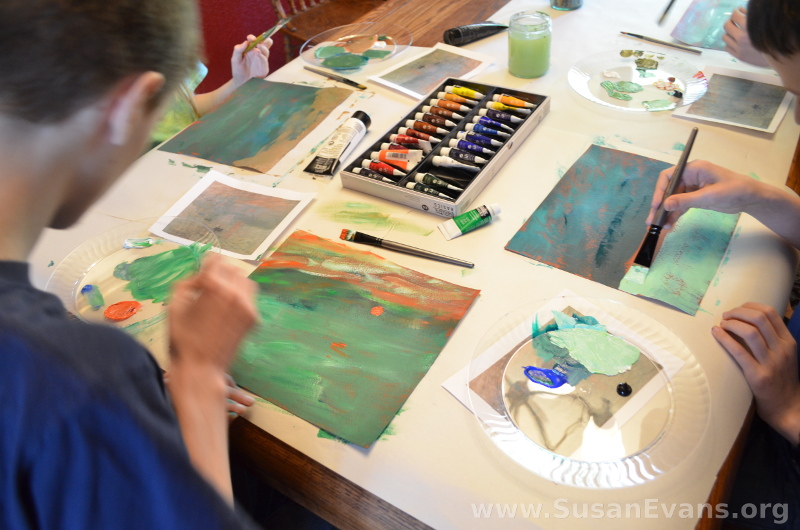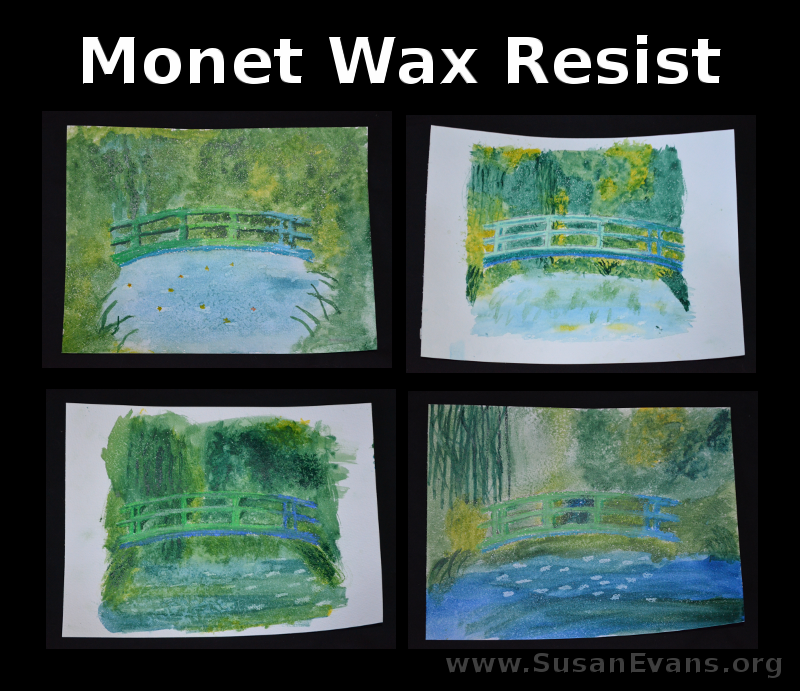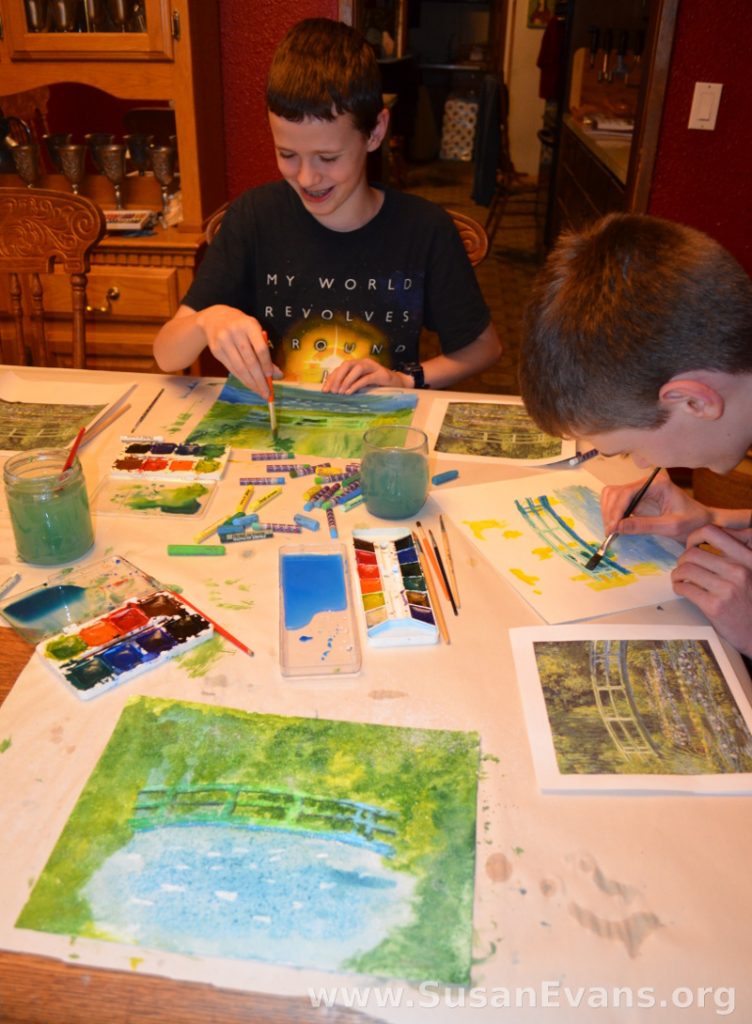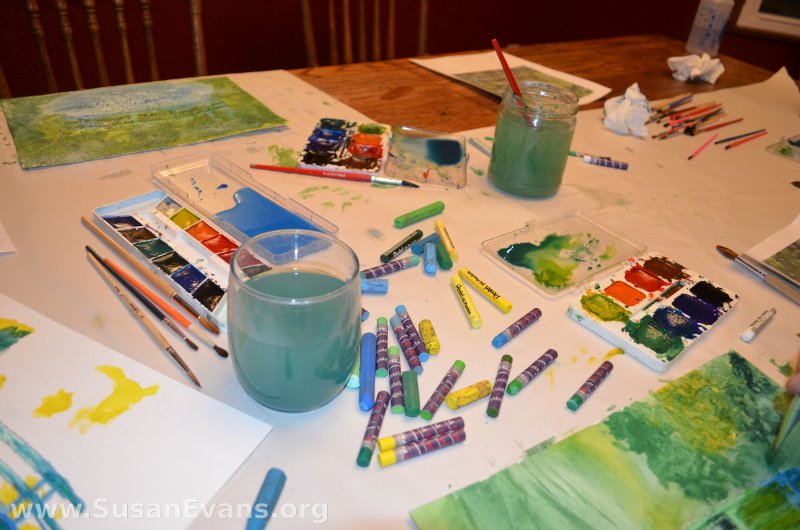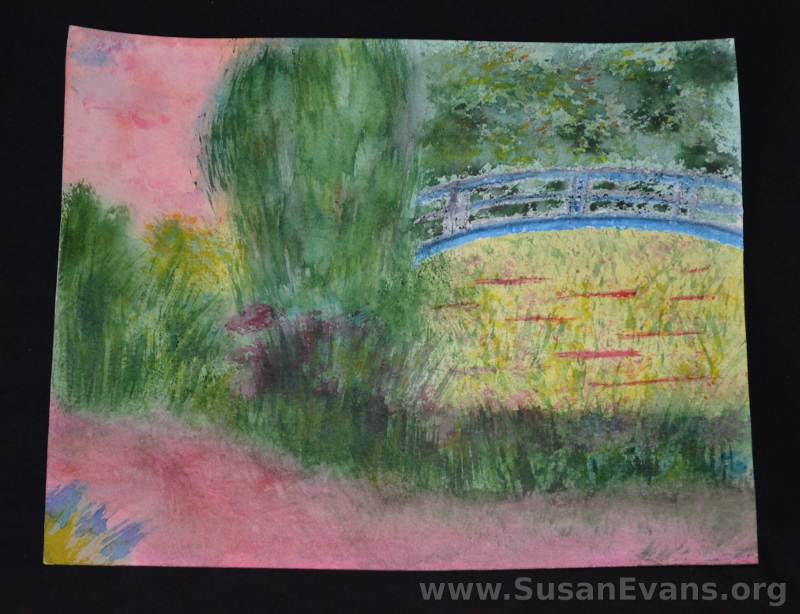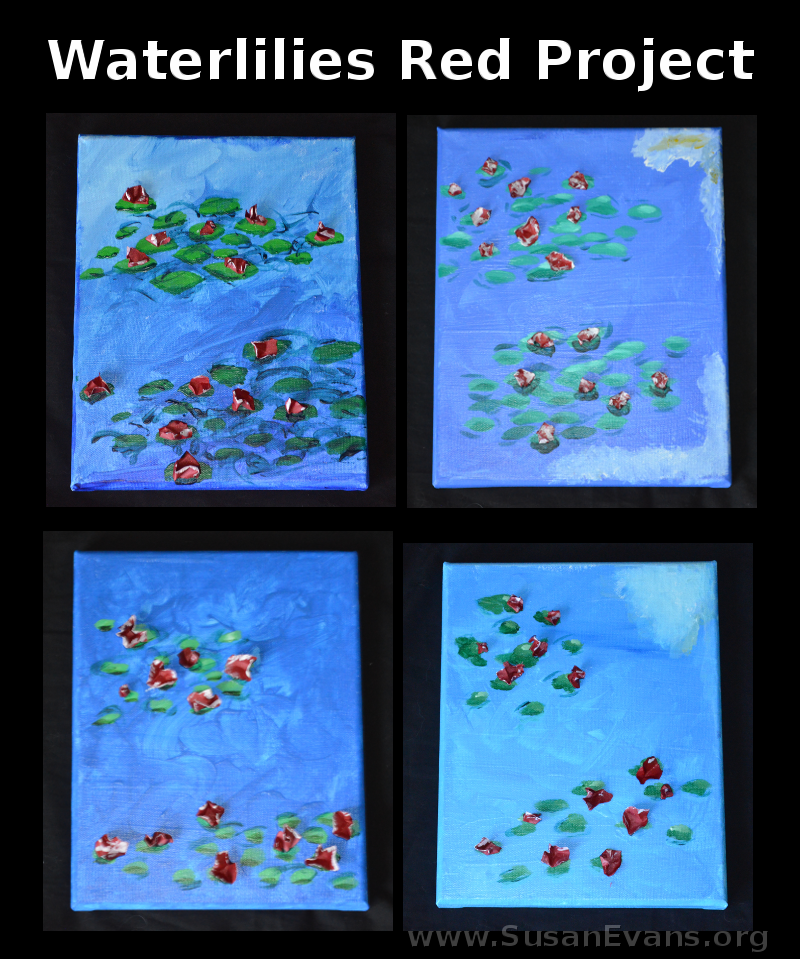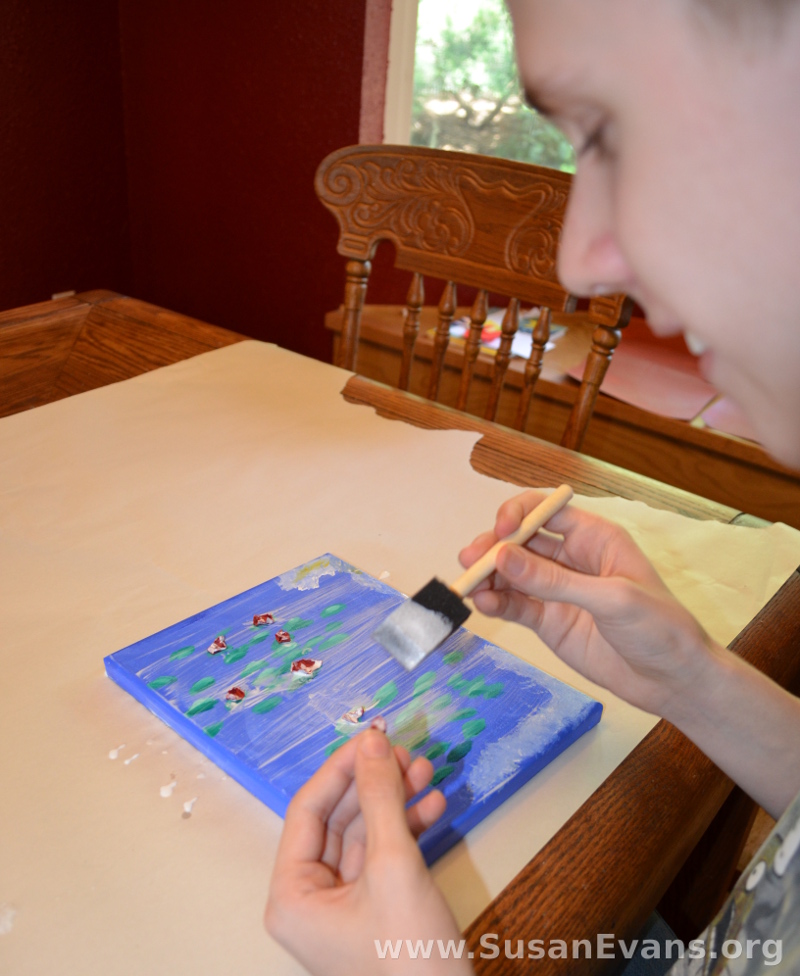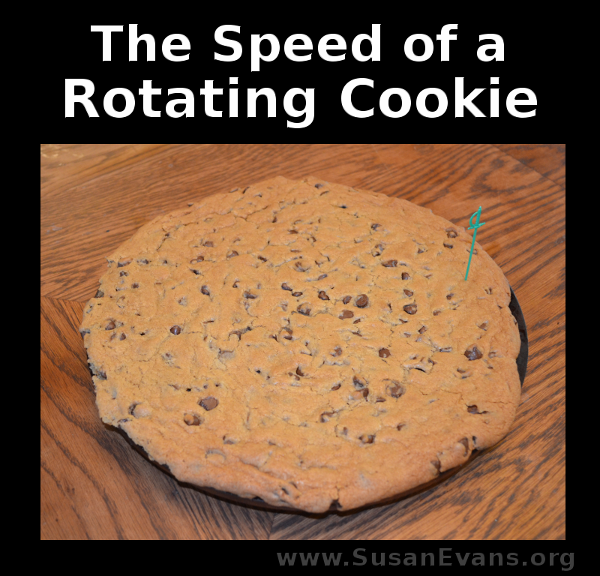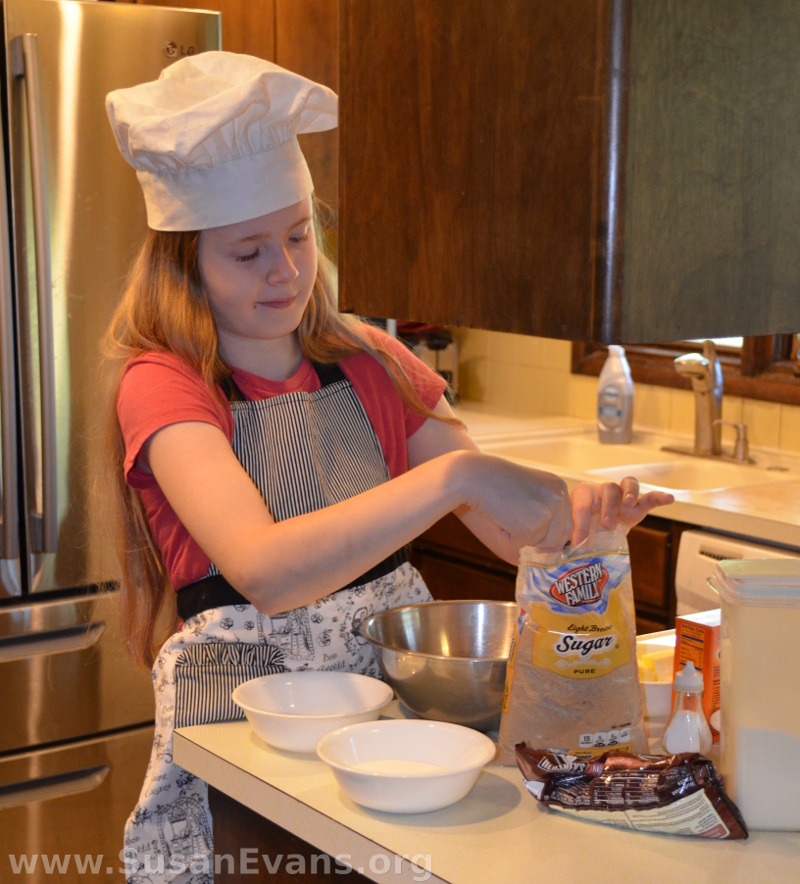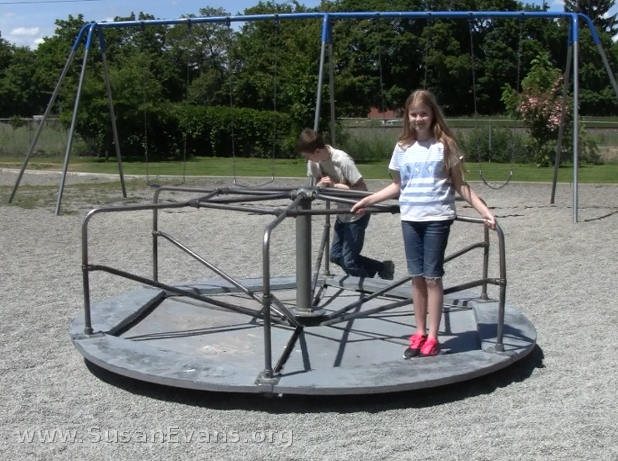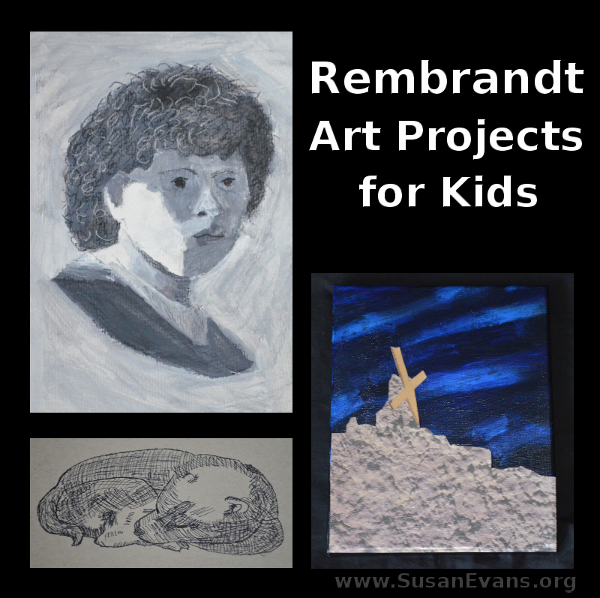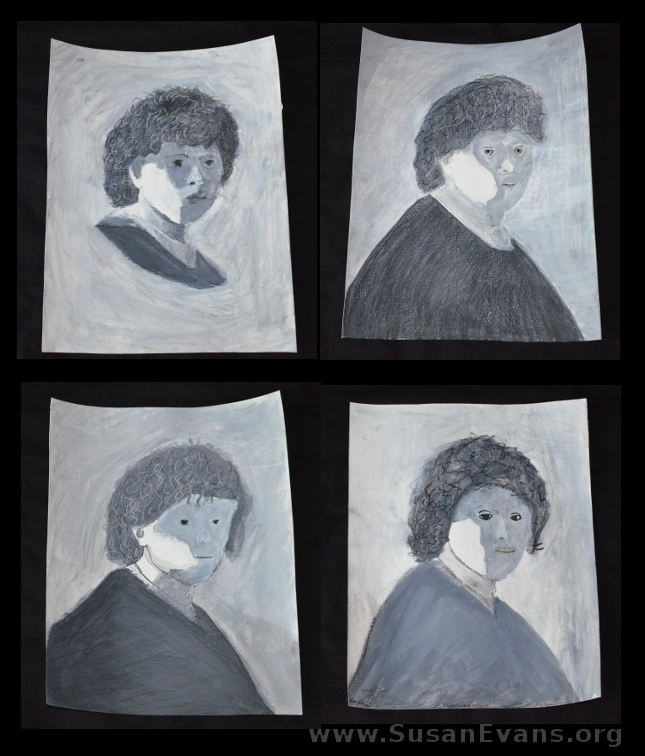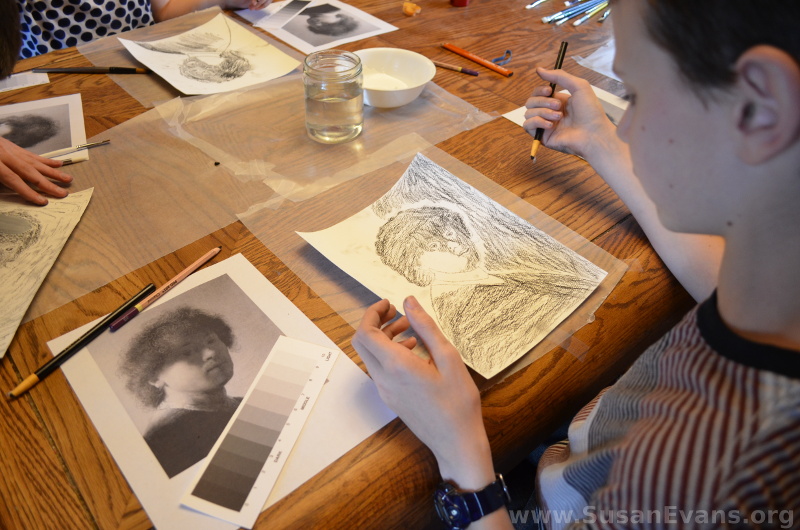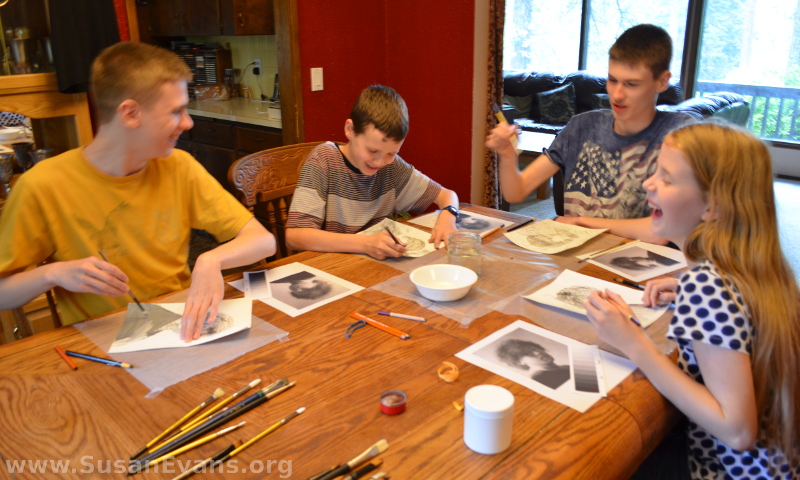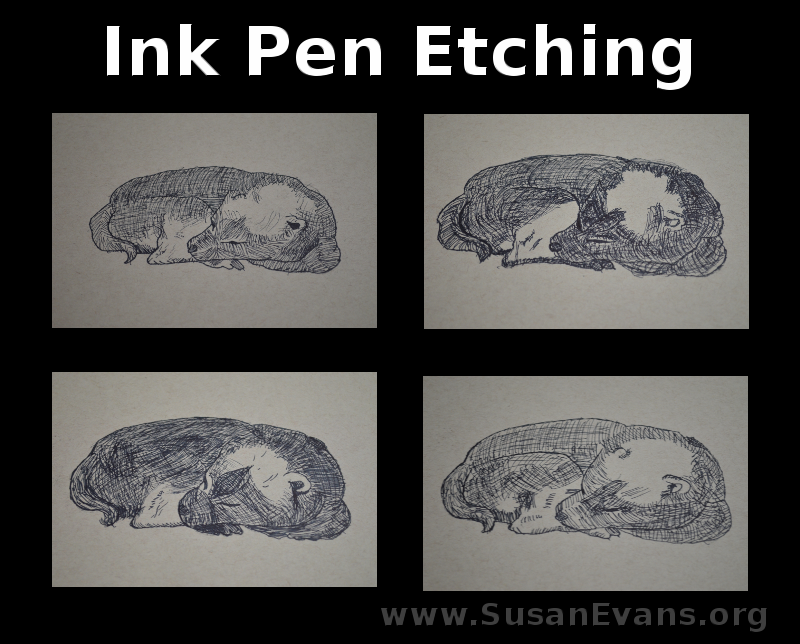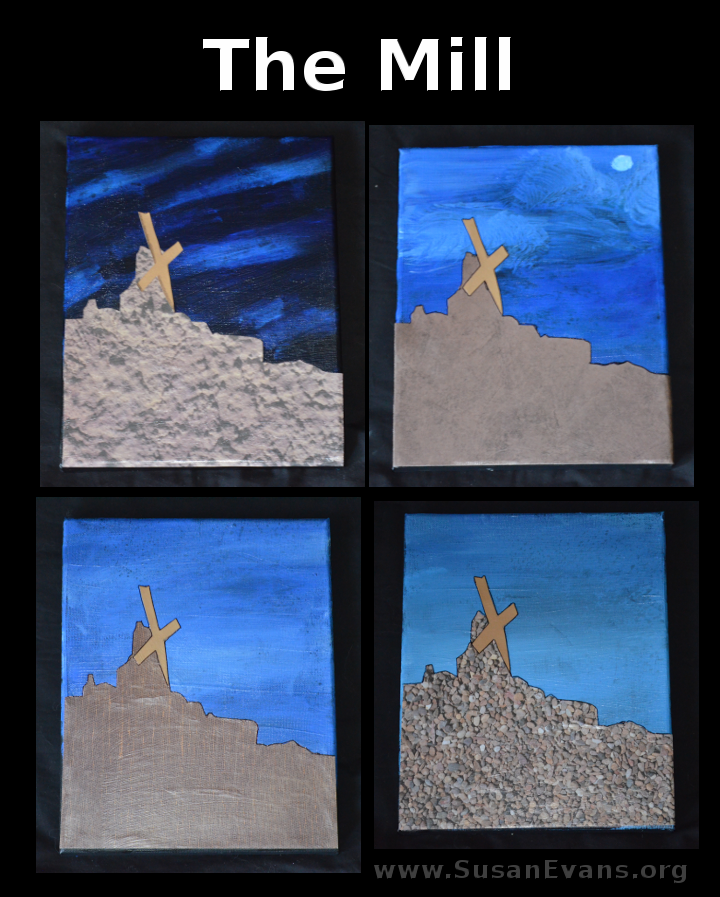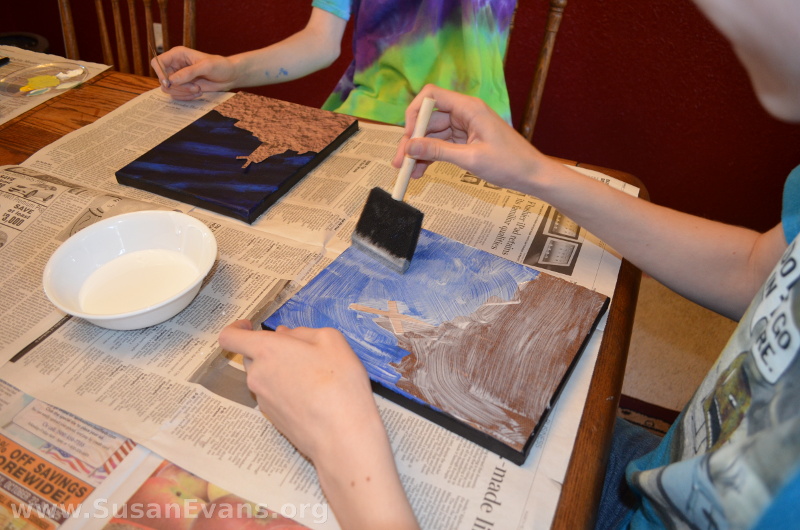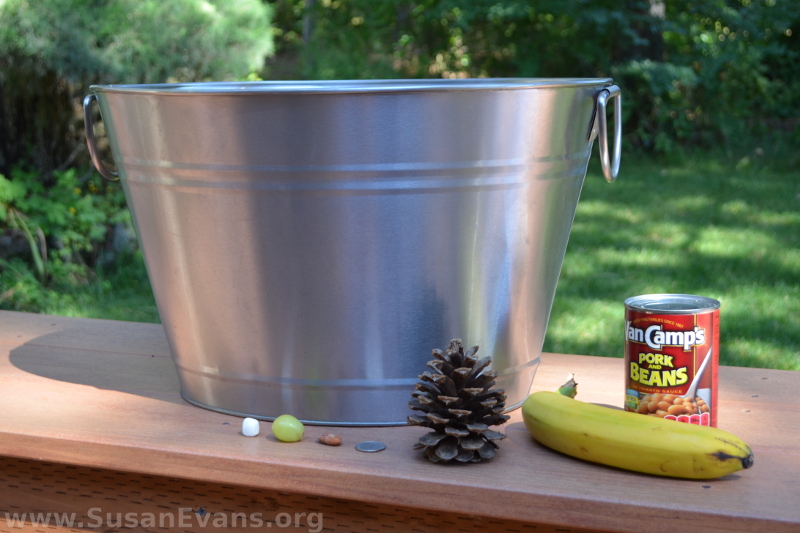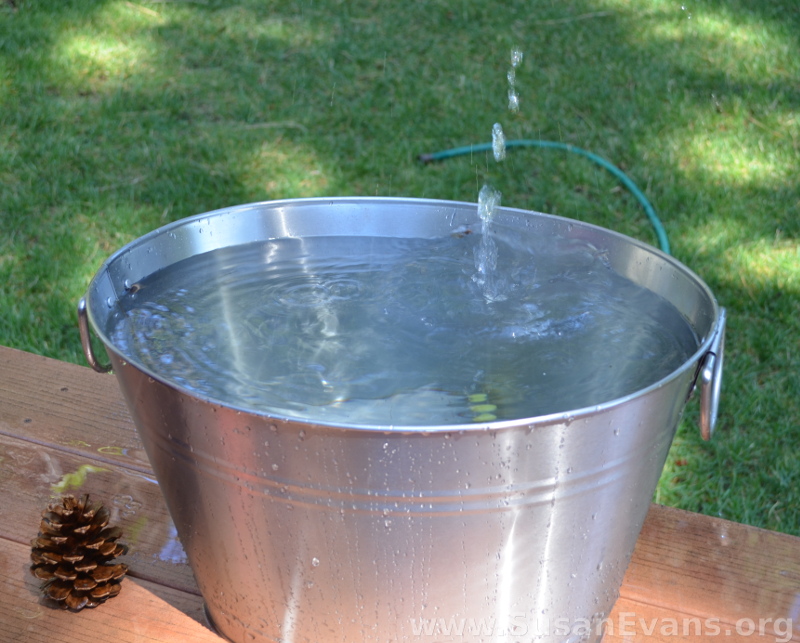This post contains affiliate links. I was given access to the class to blog about it, which I was very glad to do.
This is the third week of Mixing with the Masters, and my kids created three beautiful Monet art projects. Many Impressionist works of art focus on light shining on water, and these pieces of art are painted quickly. I love the colors that Monet used in his paintings. The Impressionists loved to paint outdoors.
Impression Sunrise Painting
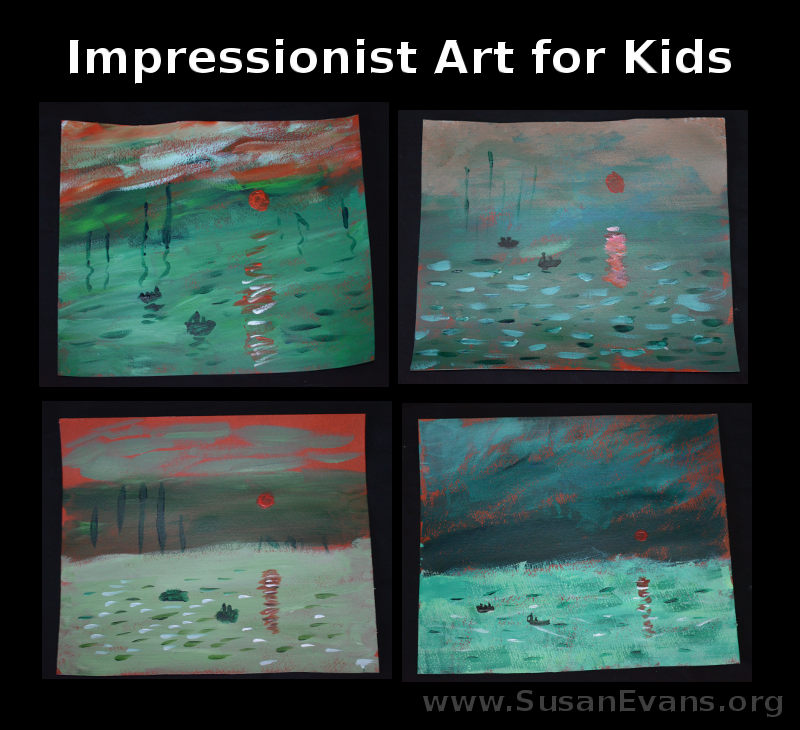
This first Impression Sunrise painting was created quickly beginning with a burnt orange paper. Alisha (the art instructor) gives you step by step instructions on how to paint this scene briskly with back and forth strokes of the brush. I like the reflection of the setting sun in the water, and the silhouette of two boats in the foreground.
Japanese Footbridge Wax Resist
This project came out beautiful! Alisha shows how to create this crayon resist with oil pastels and watercolors. She uses a secret ingredient to cause the scene to look like it has thousands of tiny leaves. I thought it was incredibly clever!
We listened to the song “Like a Bridge Over Troubled Water” by Simon and Garfunkel while painting the bridge.
We dumped all the greens, yellows, and blues onto the table, and the kids created the scene with these colors.
I decided to do a watercolor based on a different Monet bridge scene:
The colors were fun, and I used a Bob Ross brush that he uses to paint his “happy little clouds.” I painted the bushes, trees, and grasses with that brush. And I did the same crayon resist that Alisha shows you in the Japanese Footbridge piece.
Waterlilies Red Mixed Media
This was another lovely project. We painted blue water on a canvas, along with the water lilies. We made the red water lilies three-dimensional by gluing them onto the lily pads. Alisha gives great instructions for how to make the water lilies come alive in the water.
We are thoroughly enjoying this Mixing with the Masters art class, and we can’t wait for next week, which is Vincent Van Gogh!

